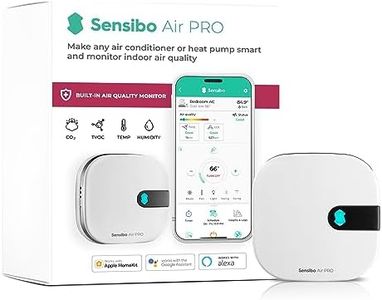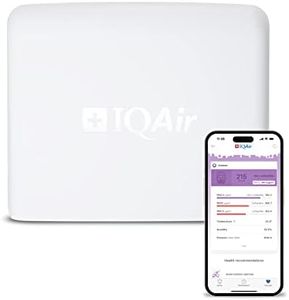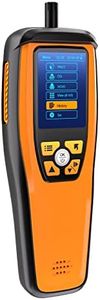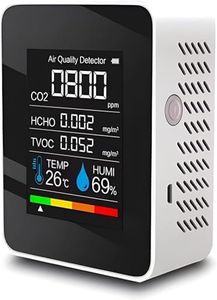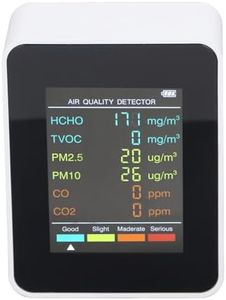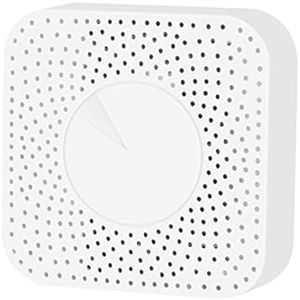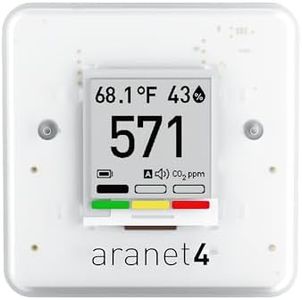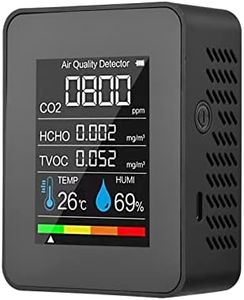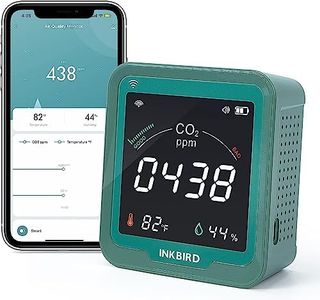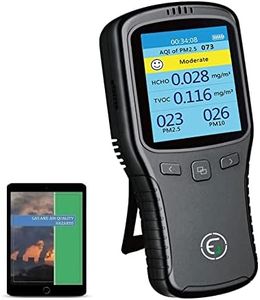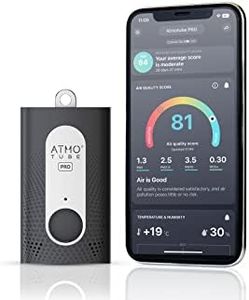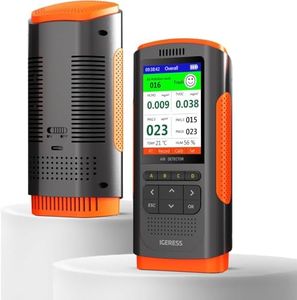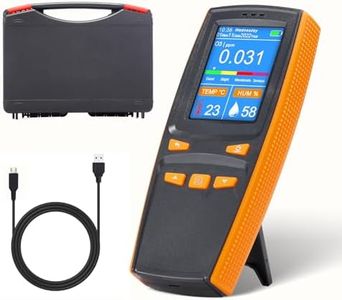We Use CookiesWe use cookies to enhance the security, performance,
functionality and for analytical and promotional activities. By continuing to browse this site you
are agreeing to our privacy policy
10 Best Air Quality Tester
From leading brands and best sellers available on the web.Buying Guide for the Best Air Quality Tester
Choosing the right air quality tester can help you monitor the air in your home, office, or other environments, ensuring it’s safe and healthy for you and your loved ones. The process is about understanding what you want to detect and where you plan to use the device. Pay attention to the main features, consider your main concerns (like allergies, pollution, or gases), and factor in how easy the device is to use and understand.Measured ParametersMeasured parameters refer to what types of pollutants or conditions the device can detect, such as PM2.5, PM10, VOCs, CO2, formaldehyde, temperature, or humidity. This is crucial because different types of pollutants affect air quality differently and may pose different health risks. Generally, basic air quality testers might only detect one or two particles like particulate matter or CO2, while advanced ones cover a wide range of pollutants. To pick the right tester, start by identifying the main concerns in your environment—for example, if you live in a city with pollution, PM2.5 is key, or if you're worried about toxic gases, VOCs and formaldehyde sensors are important.
Sensor Accuracy and SensitivitySensor accuracy and sensitivity describes how reliably and precisely the tester measures air quality. Higher accuracy means the device gives readings closer to actual indoor air conditions. Entry-level testers may only offer broad indications and can have greater measurement error, while more sophisticated devices provide more precise readings and can detect even small changes in air quality. If you need basic awareness, lower accuracy may suffice, but if air quality is a serious concern—such as for health reasons or scientific tracking—opt for a device known for better sensitivity and reliability.
Display and Data PresentationDisplay and data presentation covers how the device communicates air quality information to you. This can range from simple color-coded lights or numbers to detailed digital displays with graphs and historical data. Simple indicators might be enough if you want a quick sense of air quality, but if you want to track changes over time or understand which parameter is causing problems, look for testers with clear, informative screens and the ability to show readings for each pollutant separately.
Ease of UseEase of use refers to how simple the tester is to operate, including setup, reading results, and maintenance. Some testers are very straightforward—turn them on, wait for a reading, and that's it. Others may require more calibration, app installation, or connecting to WiFi. If you want a device for day-to-day peace of mind, simplicity is better; if you're tech-savvy and curious, a more complex device with extra features might be enjoyable and useful.
Portability and Power SourcePortability and power source talk about whether the tester is meant to stay in one place or be moved around, and whether it runs on batteries or plugs into the wall. Portable devices let you check air quality in different rooms, take them to work, or even use while traveling, while stationary units monitor one specific area continuously. Battery-powered testers offer flexibility, but will need recharging or replacements, while plug-in units are less mobile but don't require attention to power. Think about where you’ll be using the tester most often, and whether you want to monitor multiple spots or just one.
